4523 people reached on Lassi with Lavina
Sanjana Raj Purohit, Khanaprava Majumder and 152 others like it on Lassi with Lavina
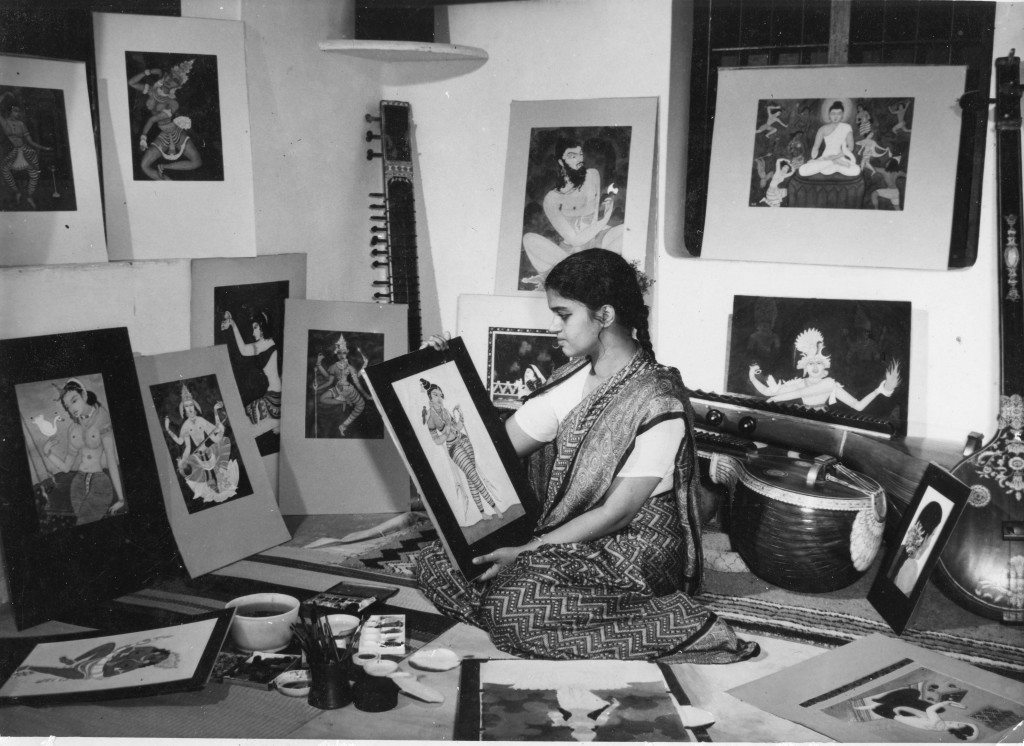
India’s Forgotten Artist was a New Yorker, a Renaissance Woman
[dropcap]S[/dropcap]he was born in Mysore, Southern India in undivided India. She grew up in pre-Independent India but died in New York, an American citizen. Yet the deep cultural heritage of her Tamil Brahmin family and the power of the Freedom Movement always stayed with her and became a part of her art by osmosis. As a teenager, she had sang bhajans by Gandhiji’s side and even when she embarked on her American journey, she carried with her a uniquely Indian perspective of art, music and the world.
So who was Y.G. Srimati and why has the world forgotten this accomplished artist? Where is her place on the map of Indian art?
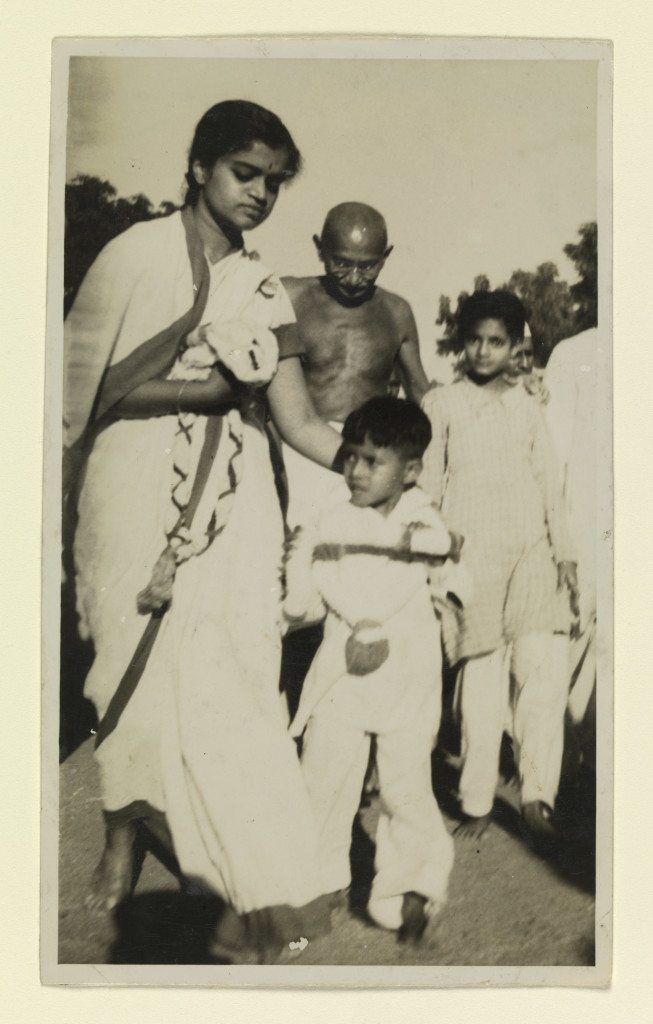
Lent by Michael Pellettieri
Mahakali
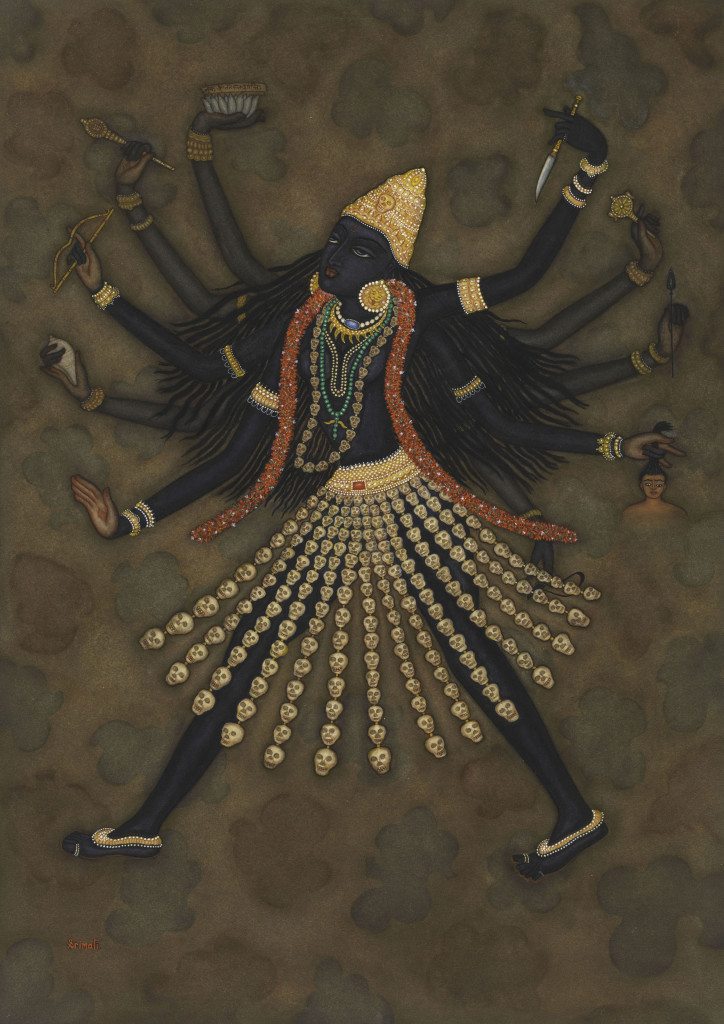
The Metropolitan Museum of Art, New York, Gift of Michael Pellettieri, in memory of Y.G. Srimati, 2009 (2009.211) Photo: © 2009 M. Pellettieri
[dropcap]I[/dropcap]n December 2016 the Metropolitan Museum of Art launched the first retrospective devoted to the Indian artist Y. G. Srimati (1926–2007). Drawn from The Met’s permanent holdings and private collections, this exhibition focuses on the first two decades of the artist’s career but also features key works from the later periods. The exhibition, which runs from December 15, 2016 to June 18, 2017, is made possible by The Miriam and Ira D. Wallach Foundation Fund, and features 25 watercolor paintings, musical instruments, archival photographs, and performance recordings.
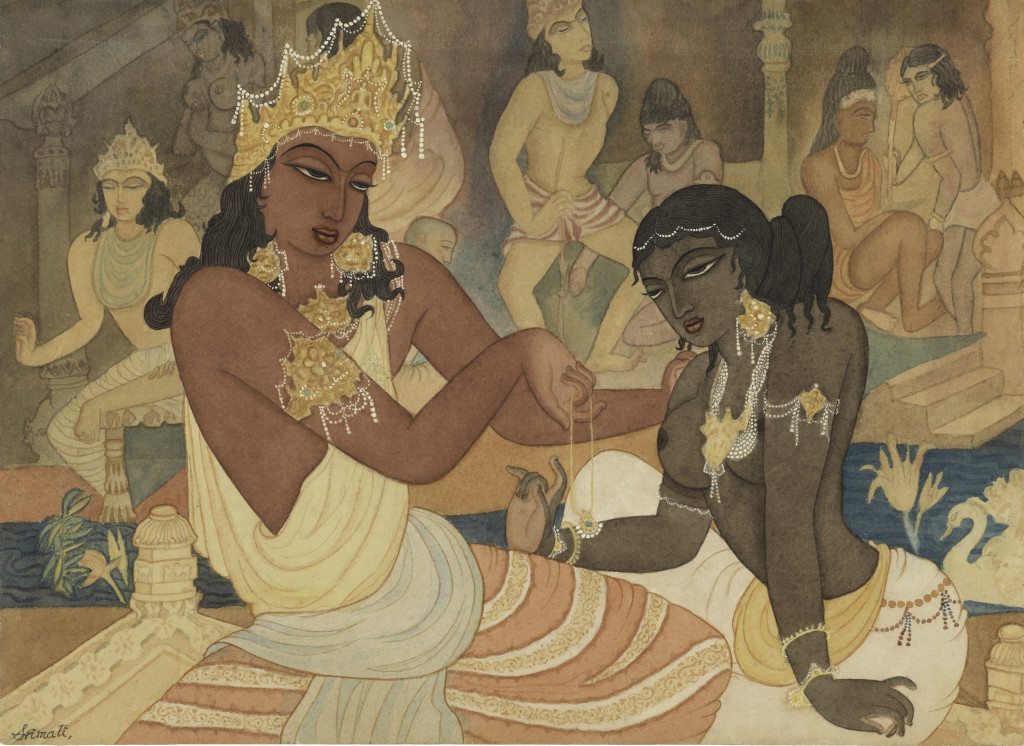
Lent by Michael Pellettieri Photo: © 2016 M. Pellettieri
[dropcap]“It[/dropcap] is an exhibition which is really intended as a small historical corrective to re-establish the position of an artist who had really got forgotten.” says John Guy, curator of the exhibition which had a gestation period of 6-7 years. “People are now not only taking a serious interest not only in the cutting edge of Indian contemporary art but also a more serious, reflective interest in where it came from and what was happening in India at that critical moment of transition to full independence.”
Srimati’s father died at an early age, and she was raised by Y.G. Doraisami, her older brother, who was a serious patron of the arts. A big influence on her was being within the circle of Mahatma Gandhi who spoke at several rallies where she sang the opening bhajans. Coming from a family that was immersed in the arts, even as a teenager Srimati was renowned in Chennai as a classical musician, dancer and vocalist.
In 1950 she was profiled in the first major survey publication of painters in post-independence India, Present Day Painters of India (Bombay), alongside such established and rising artists as Jamini Roy, S.H. Raza, K.K. Hebbar, and Amrita Sher Gil.
As Guy points out, “Srimati’s painting displayed a consistent commitment to her vision of an Indian style. She explored themes from Indian religious epic literature and scenes of rural culture, asserting traditional subject matter as part of a conscious expression of nationalist sentiments; her choice was personal and idiosyncratic… Through her highly controlled and softly modulated use of watercolor washes, Srimati built on the poetic and lyrical styles developed a generation earlier in India by Abanindranath Tagore and Nandalal Bose.”
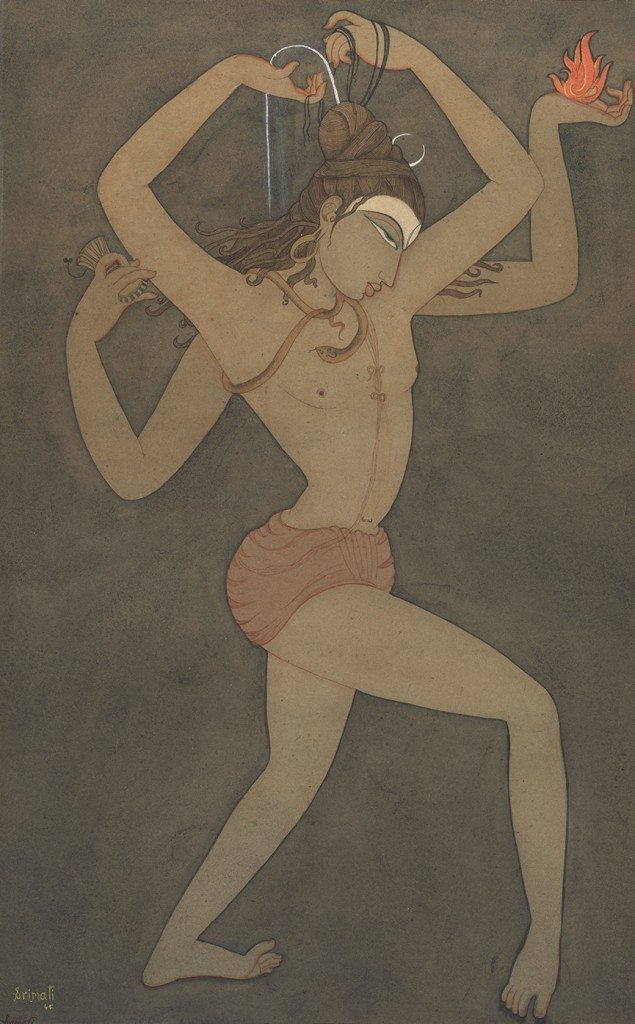
[dropcap]S[/dropcap]he came to New York with a scholarship to the Art League in 1963. It was here she met a fellow artist Michael Pellettieri, who later became her partner and went on to donate some of her artworks to the Met after her passing.
He shared an early memory of her: “When she came to the class initially she was very quiet – she didn’t make her presence known very much. Gradually she became more of her outgoing self – she started to sing some of the old movie songs that some of the Middle Eastern students knew. Before too much time had passed, people were singing and dancing in class. It was very spontaneous – one day the instructor walked in – he was pleasantly surprised to see the students dancing and singing while working on their art work. That was the effect she had on people. Her warmth and feeling for other people could be infectious.”
As Pellettieri points out, she was both modest and charismatic, religious but open to universal ideas and music. Besides north and south Indian music, she loved the Beatles, Elvis Presley, and Mozart. In New York, she reinvented herself as a lecturer and presenter of concerts on college campuses. He recalls, “Most Indian musicians travel with a troupe but she would travel alone, a suitcase filled with her paintings, instruments and her saris. In the 70’s the Vietnam War was going on and there were a lot of protests on campus and she would always end her concerts with ‘Om Shanti Om’ and this created a very warm feeling between her and her audiences. This was the kind of performer she was – she didn’t push herself out but she loved sharing her experiences.”
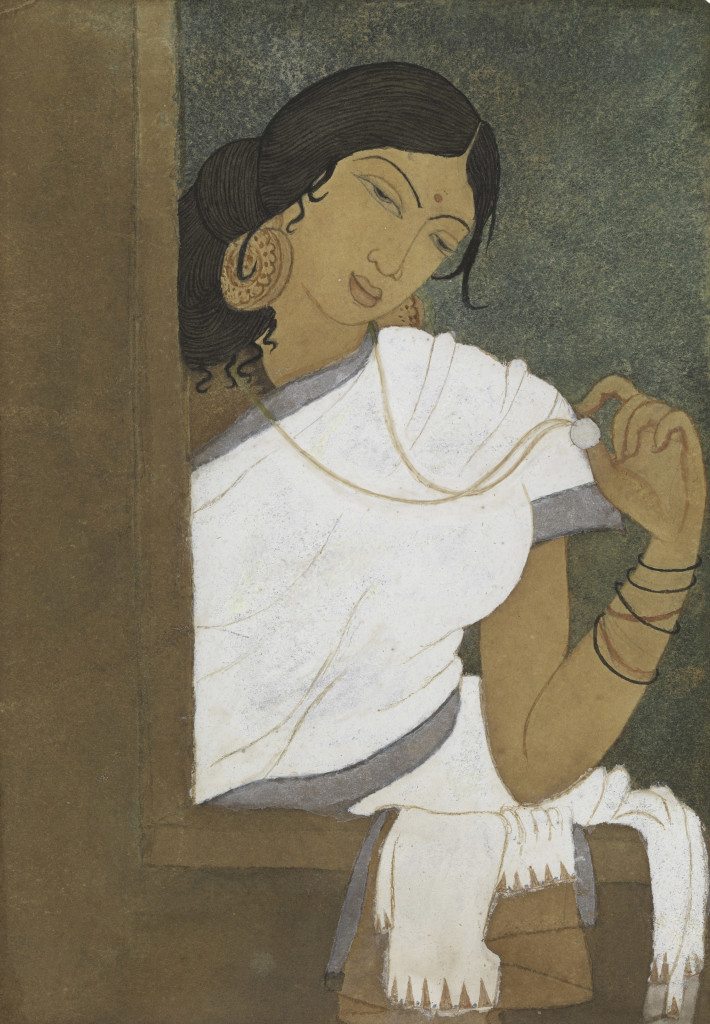
Lent by Michael Pellettieri Photo: © 2016 M. Pellettieri
[dropcap]A[/dropcap]lthough Srimati had left India, India remained the soul and breath of her paintings. In 1961 she worked on 15 commissioned paintings to accompany a deluxe edition of the Bhagvad Gita. One of the most remarkable is her watercolor of Mahakali. She wrote in her diary that she was awakened at night by the crushing sounds of the skulls in Kali’s skirt and kept hearing them until she finished the painting which encapsulates the power of the Goddess.
While many artists change their style to fit with changing times, Srimati stayed true to figurative painting even after it lost its audience. The result was that she dropped off the horizon and now this retrospective takes on the challenge of re-establishing her position in the early 20th century Indian art through 25 of her finest paintings.
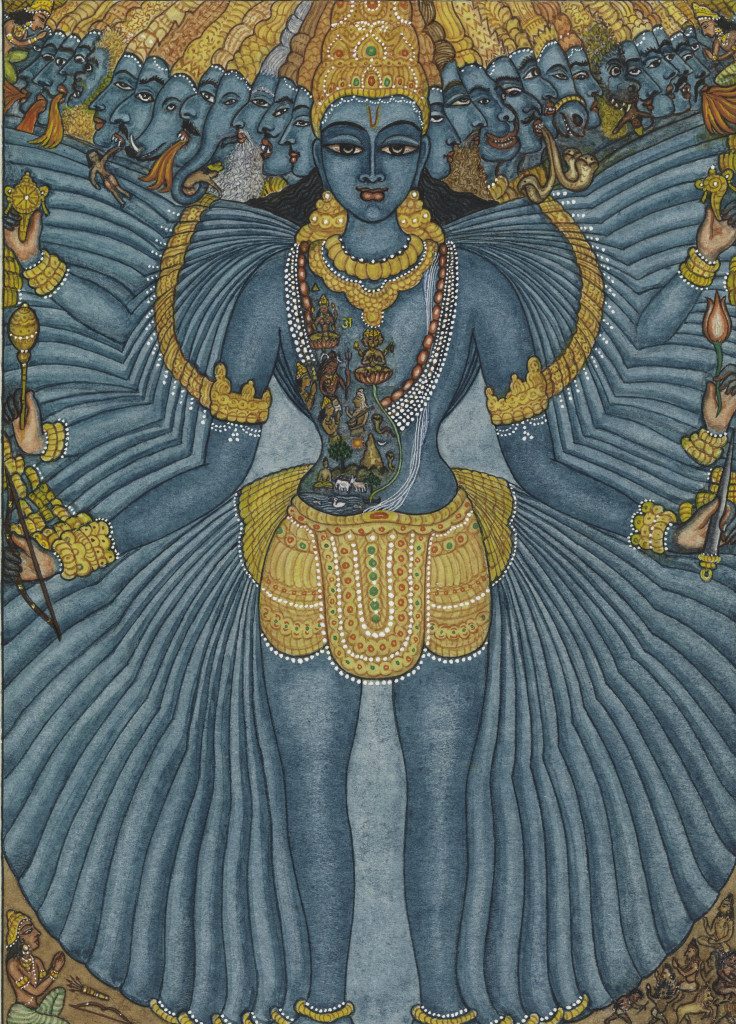
Lent by Michael Pellettieri Photo: © 1964 George Macy Co. Limited Editions Club
[dropcap]S[/dropcap]o does India know enough about her art or has she indeed disappeared?
“Srimati was well-known in India but once she came to the US she did not go back to exhibit,” says Pellettieri . “She supported herself through teaching and commissions. Most of the time artists try to push their careers – she just was not that kind of person. She did not do self promotion – she was very content painting in New York. She did her prayers and meditation every single day; she considered her work her worship.”
As John Guy astutely describes it, “The career of Srimati – classical singer, musician, dancer and painter – represents a continuum in which each of these skills and experiences merged, influencing and pollinating each other.”
She was one of the early Indians to get a visa based on special ability in 1961 and in her later years she took American citizenship. She lived literally a mile from the Metropolitan Museum and now her musical instruments, art and fabric are in the museum – so you could say her soul is there. She died in 2007, at the age of 81.
Srimati was indeed a true Renaissance Woman who painted, played the sitar and danced, even as she loved the opera and cinema. Pellettieri recalls that she was always generous with the spotlight and encouraged ordinary people to perform informally at her home concerts. She was a great cook who fed people wonderful Indian food and then, surrounded by her art, she enriched them further with India’s traditional music and dance. In a way she had recreated her beloved Chennai in New York and transported her Indian existence here.
You can view the exhibition at the Met till June 18, 2017.
(This article first appeared in the Sunday magazine of The Hindu newspaper)

4 Comments
Google + Watch India Wide Community
Who was Y.G. Srimati & why has the world forgotten this artist? Where is her place in Indian art?
http://bit.ly/2kcBAFK
4+
Google + India Community 20 +
Leela Sai +1’d
Sundar Tumuluru commented
santhosh devaraj +1’d
Anil Kumar B.k +1’d
Namita Verma +1’d
Dvs Jagan +1’d and reshared
Haroen Abdoelbasier +1’d
Samved Iyer +1’d
Konduru Mahendra +1’d
Subhasish Saha +1’d
Mahesh Thakor +1’d
Mehul Soni +1’d
Michelle Bahadur +1’d
nisha rathnayake +1’d
Arun Ray +1’d
YATINDRABHAI.J. RANABHATT +1’d
Prakhar Sharma +1’d
Comment on Google + India Community
Sundar Tumuluru
Superb art work… Unfortunate to forget the creator of this art work…Y.G.Srimati..
Comments in The Hindu
Meena Chandramouli
What a great woman!. Indeed all of India & Indians all over the world should be very proud of such a genius.
Rahul
Yet again The Hindu educates and enlightens us by teaching us about an obscure part of our culture. Thank you!
Sridhar
What beautiful paintings and I haven’t heard of her before!
Raj
Drawing bare pics of our deity is not needed and I am not sure what these artists think of themselves. First time, I felt shame looking at maa saraswati pic.